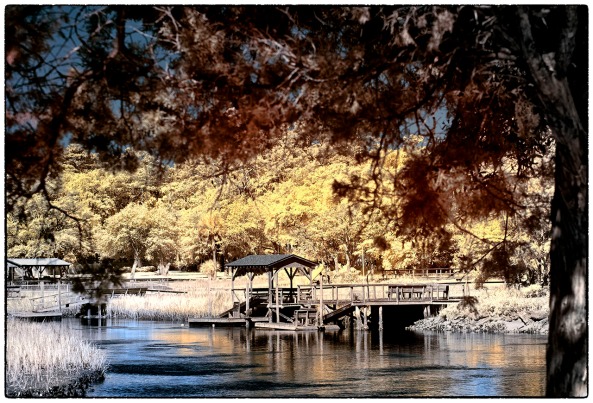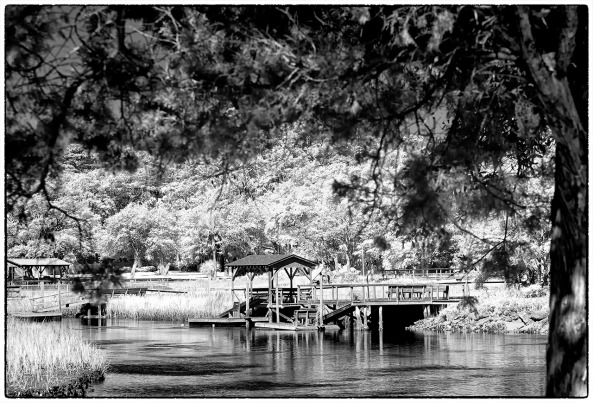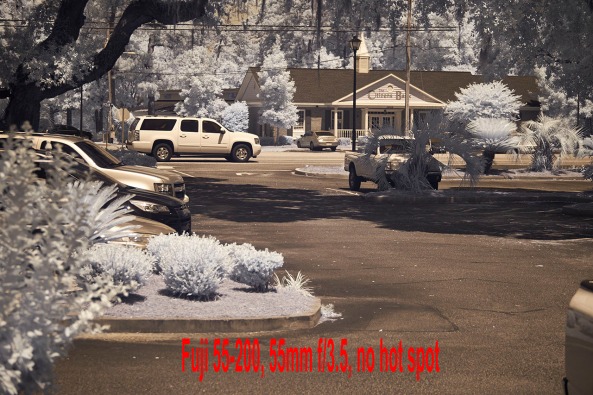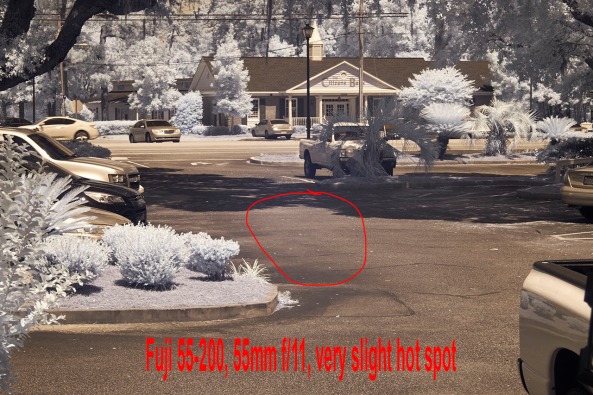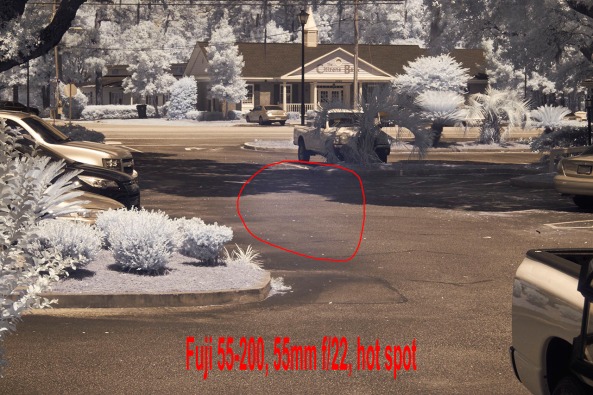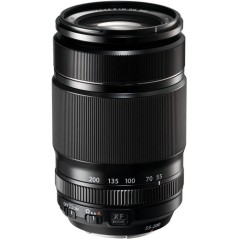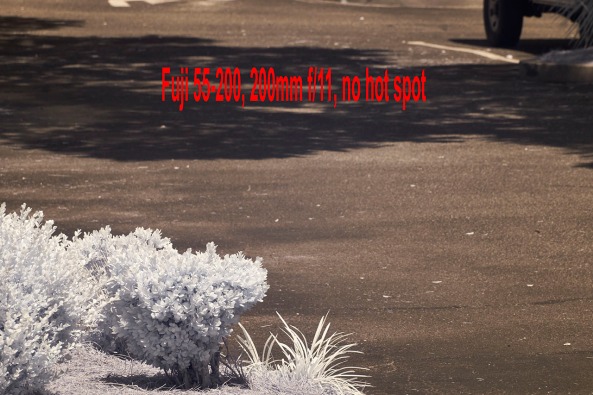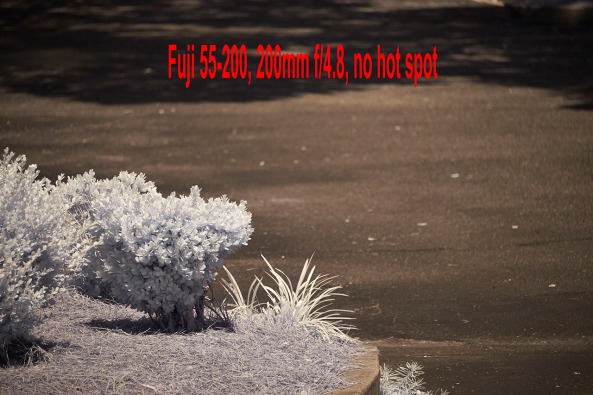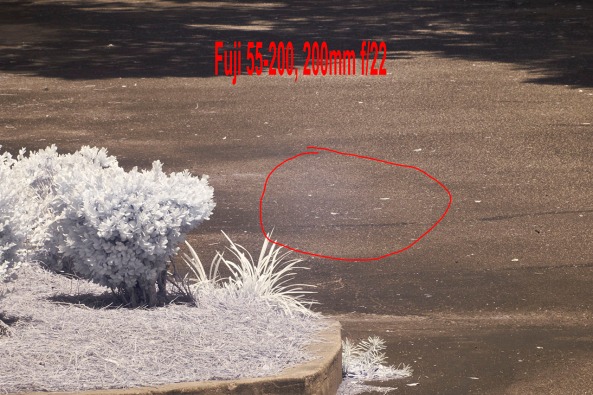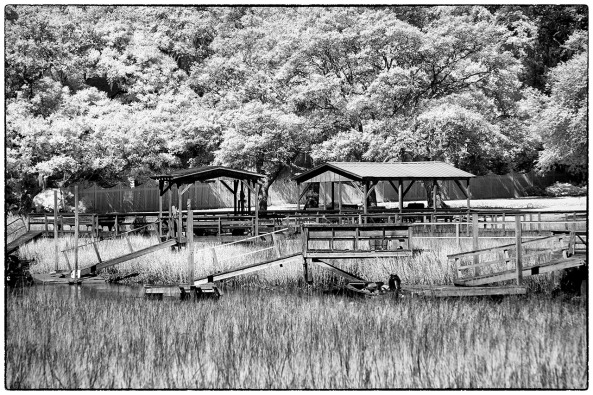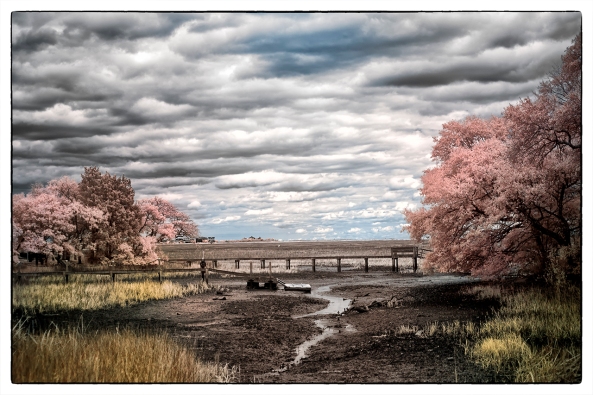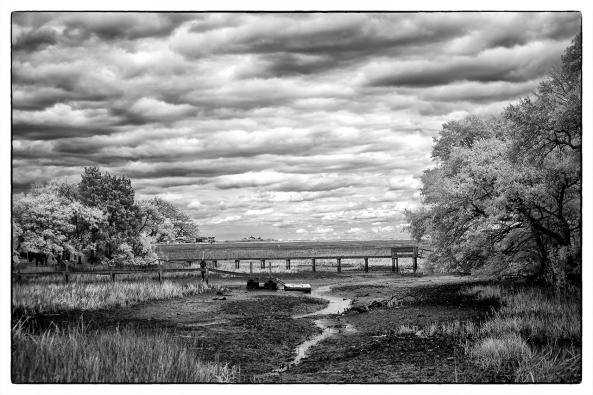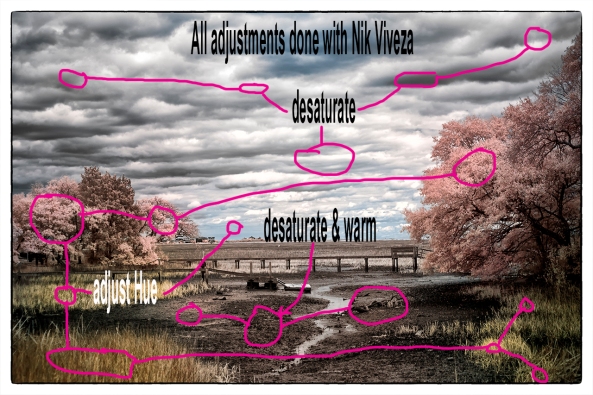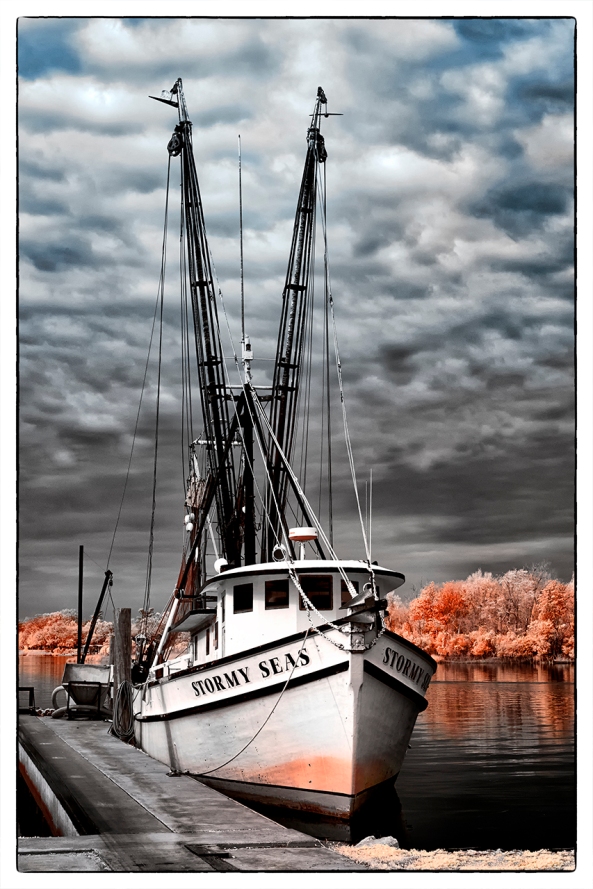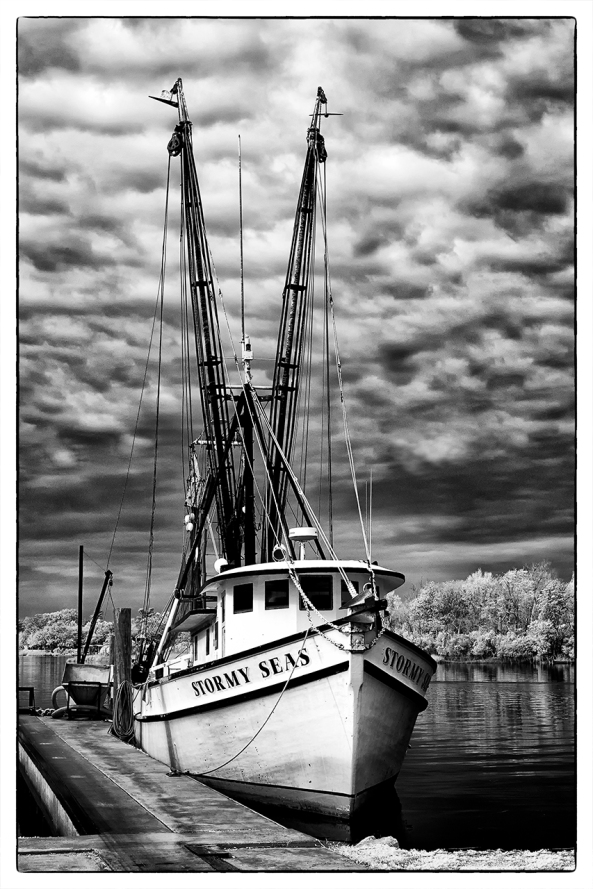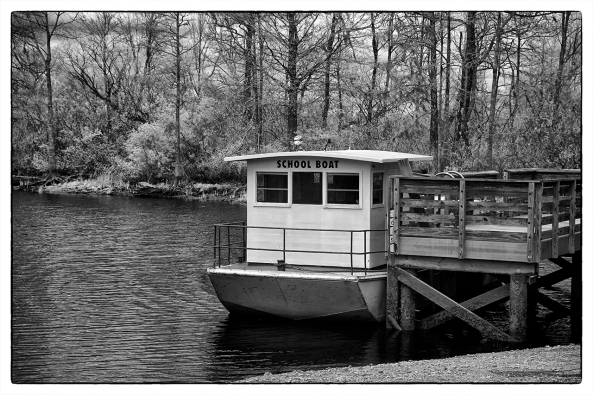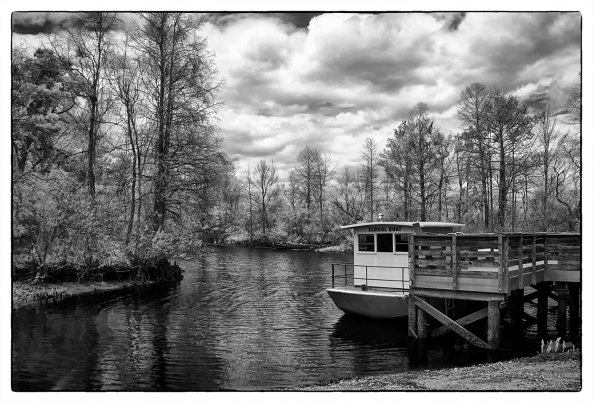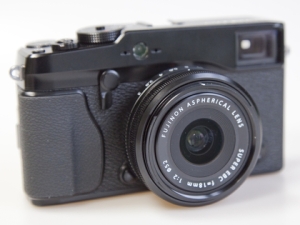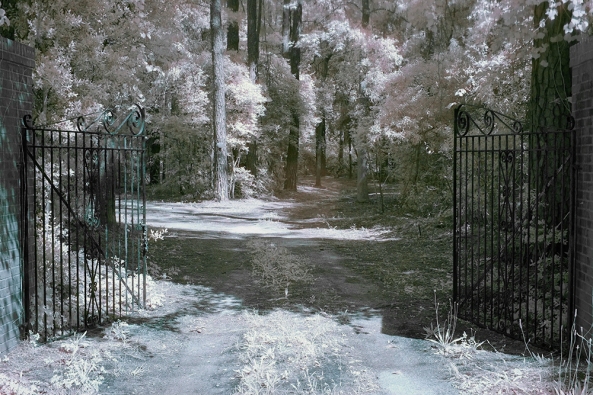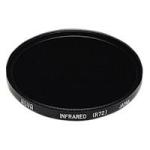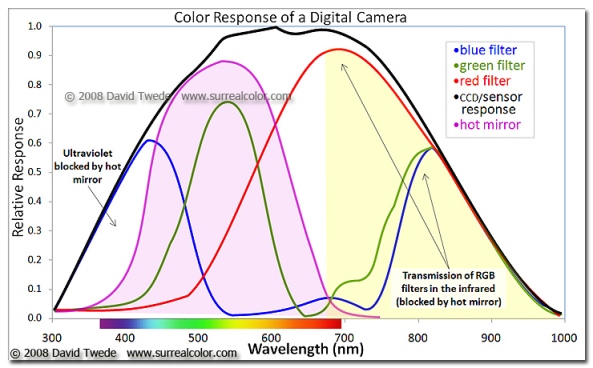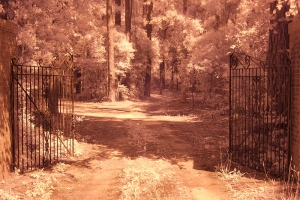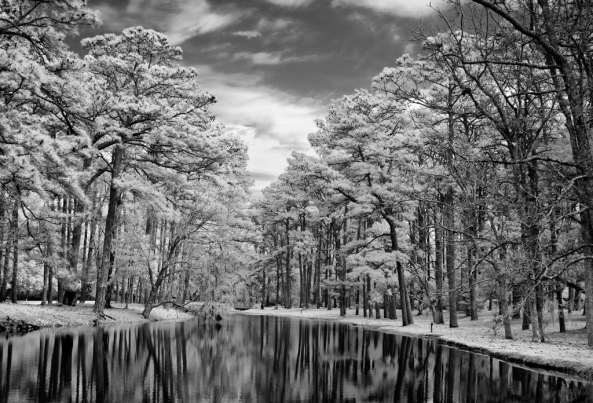How To IR Edit On The Cheap…
It does not really matter what IR spectrum you are shooting in under 720nm. Everything from 720 down to 590 can be processed within Photoshop as a Faux Color image. You have seen hundreds of example images of this here on the BLOG as well as several recipe posts on how to do it within Photoshop CS5 using the NIK filter set.
This post then is to put forward a simple recipe on how to do this within Photoshop Elements V9 and lower. The main issues being the following:
- 8 bit files
- Lack of automated Actions or scripts
- Lack of any REAL ICC Color support
- Lack of a Channel Mixer
The real deal killer is the lack of a Channel Mixer within Photoshop Elements. Without this one simple tool there is no way to exchange the Blue and Red channel information and emulate Kodak’s HIE films.
But what if we found a way around the lack of a Channel Mixer within Elements? Wouldn’t this then open up the opportunity to use a very low cost photo editing tool to generate our stunning Faux Color Infrared images?
One of my readers made a recent comment on a plugin from a company called SimplePhotoshop.com that will give you several interesting plugins for Elements but also provide a Channel Mixer! This is a great step forward. After reading Martan’s comments I downloaded the plugin and tested it. This post is about my results!
Before we actually get to the meat of the process let me start by telling you that I DO NOT LIKE ELEMENTS! The interface is bad, the startup and libraian is terrible and the other issues listed above just turn me against it! That being said, it is hard to turn up your nose to a product that only costs $70.00!
One other thing for you to consider… You really should be shooting in the RAW format! Having 4.3 billion colors rather than 16 million is just not to be scoffed at! Plus having 3 stops of exposure latitude prior to editing gives you great control on what is a usable image from the very start!
OK, the basic Post Processing steps:
- Convert your RAW image to Tiff.
- Open in Elements
- Crop
- Run NIK Software’s Define 2.0 noise reduction filter.
- Run NIK Software’s Viveza 2.0 and apply STRUCTURE only.
- Open the Channel Mixer, changing red and blue
- Run the Hue/Saturation adjustment and adjust DOWN the saturation HUE on the Cyan channel.
- Run NIK Software’s Viveza 2.0 and make your color, saturation, structure & contrast adjustments across the entire image.
- Flatten the Layers
- Save in your output library with a meaningful name!
Here is the converted RAW test image that I used for this test.

Processed RAW Ima
_____________________________
Opened in Photoshop Elements Ver 9

Elements 9 With Open RAW Image
Notice the placement of the Elements + tools just to the right at the top of the image! At this point you would crop your image to your own specifications.
_____________________________
NIK Define 2.0 Plugin Window

NIK Define 2.0 Noise Reduction Plugin Window
Most of the time when using Define 2.0 you will find that the automatic selection of noise areas and profile adjustments work great. You only have to press the OK button on the bottom to process the image.
_____________________________
NIK Viveza 2.0 Structure ONLY

NIK Viveza 2.0 Plugin Window
Here we are running the Viveza plugin on our image and applying STRUCTURE only! We do this by not creating a control point and just running up the structure control. The reason for this is to define the contrast edges before we do the channel swap.
_____________________________
Running The Red & Blue Channel Swap

Elements + Channel Mixer RED Channel
Select the RED channel and move the red slider down to 0, the blue channel up to 100% and the Green channel up to give the tree leaves a pink/red color.

Elements Plus Channel Mixer, Blue Channel
Next we change the the channel to the blue and run the red slider up to 100% and the blue down to 0. Do not worry that the overall image is really super saturated, we will fix that later. Now, you should have yellow/red trees and a blue sky. Naturally finished and treated wood can take on a greenish cast as well.
_____________________________
Hue & Saturation Adjustments

Adjustment Of Hue & Saturation
Here we will select the CYAN, RED, YELLOW & BLUE color channels and adjust the Saturation Levels and Hue levels to create an overall image that is within the color range that we like. You can also select the MASTER channel and lower the overall saturation if it is just too punchy! I do this specifically to get the shade and contrasts of the blue skies correct.
_____________________________
NIK Viveza 2.0 Overall Image Adjustments

NIK Viveza 2.0 Master Adjustments
OK, here is where the real work is done. Look closely at this image. Notice the little circles all over the image? Well, these are adjustment points that I have selected all over the image and individually adjusted for saturation, contrast, structure and hue. Some of the areas like the wooden dock and buildings I simply ran the saturation all the way down to give me monochrome while adding contrast and structure. Other areas I added reds and structure as well. This is where you really create your Faux Color image! It is all very easy to do but I warn you, keep a box of tissues close at hand because this process involving the NIK filters and adjustment points will get you so excited that you will mess yourself! They really have to be seen to be believed.
That is all there is to the entire process. All in all the entire editing process took about 3 entire minuites! Very fast and very easy.
Please let me know what you think and again a BIG thank you to Martin Young for his input about Elements Plus!
